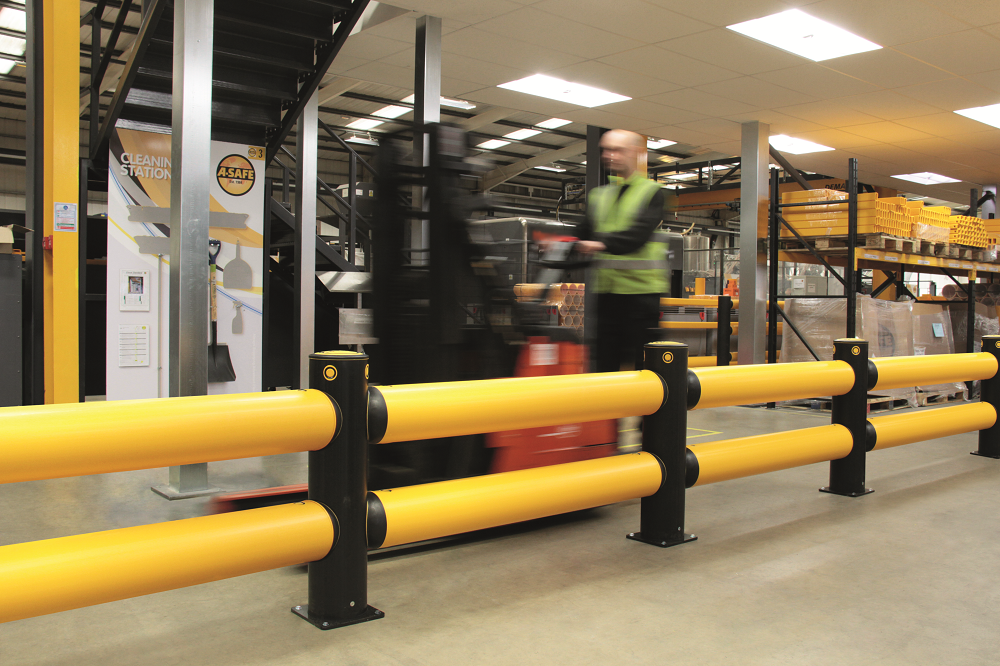Dust, debris, dirt the deadly 3Ds for those working environments where cleanliness is most certainly next to godliness.
In food and drink factories, cosmetics manufacturing, health-focused facilities or pharmaceutical environments, the constant drive for improved hygiene goes right alongside ever-better product purity and quality. Which means every product application within that working environment must adhere and contribute to the strictest demands of hygiene.
The Society of Food Hygiene and Technology notes: Poor equipment design may lead to an unacceptable build-up of debris or by allowing untreated ingredients to accumulate to a level at which they may cross contaminate the processed food.
Fear of contamination is a constant threat one that could potentially cause a full-scale shutdown of an entire facility and heavy loss of reputation so products that are fit-for-purpose, but also contribute to the hygienic demands of a facility, are essential. And in turn, those deadly 3Ds, which need constant monitoring, can be kept in check.
Add, then, to those perilous 3Ds the Food Standard Agencys (FSA) number one hygiene problem in food manufacturing: moisture.
Wetted zones encourage bacteria, including the Contamination Alerts most frequent unwelcome visitor, listeria. Good food and drink manufacturing practice will involve the cleaning of lines and areas for about one-third of every 24-hour cycle. Therefore, products with a water-resistant tolerance to the necessities of the wipe-down and the jet-wash are also essential.
In the past, the barriers used in sensitive environments had the potential to cause more problems than they solved. Take a steel barrier: when brand new it is strong, shiny and aesthetically pleasing. But over time it will corrode, it will flake, it will become abrasive and untidy-looking. Add a watery wash-down to the steel mix and, of course, you have a fast track to rust and a hazardous new contamination threat to a sensitive environment.
Polymer-based barriers solved the rust problem over a decade ago. They were wipe-clean, non-toxic and chemically-resistant, so boosted industries where steel barriers were almost too problematic to deal with.
The polymer barriers had instant appeal and real success. The Senior Maintenance Manager of Haribo said in 2011: We like the hygiene aspects of the barriers as well as its strength and good looks. The metal barriers currently in use in the dispatch areas have nooks and crannies which could harbour dirt.
But the new polymer-based barriers werent yet a perfect solution from a hygiene point of view. There were still some ingress points where the 3Ds could collect. There was still a possibility of water infiltrating an unsealed system. And wherever water collects inside a system it soon becomes stagnant and a breeding ground for dangerous microorganisms.
So the secret code for barriers that could truly be called hygienic was a difficult one to crack. Hygienic facilities required an absence of ingress points, sealed joints, water resistance, a tolerance to wash-down chemicals and the wipe-down, non-toxic surfaces that did not corrode, flake or require repainting. All these factors had never before been combined into a single barrier system.
Design Engineer at A-SAFE, the inventors of the worlds first polymer-based barrier system in 2001, Tom Costello takes up the story: Old polymer-based barriers definitely performed better than standard steel for sensitive environments, but the old-style products werent the ideal solution in these areas.
From our point of view, we knew we had to somehow solve the issue of dirt and debris collecting in ingress points and water infiltrating the product. So over a two-year period we developed complex hygiene seals and reduced water ingress points through the use of strategically placed rubber seals.
The new hygienic barrier system, released in 2015, was called iFlex. Existing A-SAFE customers, such as Thomas Roh, the Occupational Safety Specialist at confectionery experts, Ritter Sport werent resting on their safety laurels and were highly expectant of the new system: We highly appreciate the quality of A-SAFE products. They are easy to install and very durable. Barriers that were installed eight years ago in our transit area show no signs of erosion. This is an area with lively forklift traffic where the barriers are often hit. Since the installation of A-SAFE barriers damages are decreased in the building and at our facilities. Now we are looking forward to the new iFlex Barrier Range, of which we have heard a lot recently. Especially for us as food manufacturers, the hygiene sealing of the new barriers is particularly important.
Since the launch of iFlex, a host of blue chip companies have benefited from the specific hygiene advantages of the system, including: United Biscuits, The Body Shop, Sainsburys, Nestlé, McCain Foods, Mars, LOreal, KP, Dr Oetker, Coca-Cola and more.
The hygienic supply chain is an ever-improving, ever more sophisticated part of food, drink and pharmaceutical logistics. Intelligent companies are constantly focusing on tweaking best practice and asking for more from their suppliers. And where hygiene is concerned, iFlex proved that any barriers can and must be overcome.
14th April 2016


